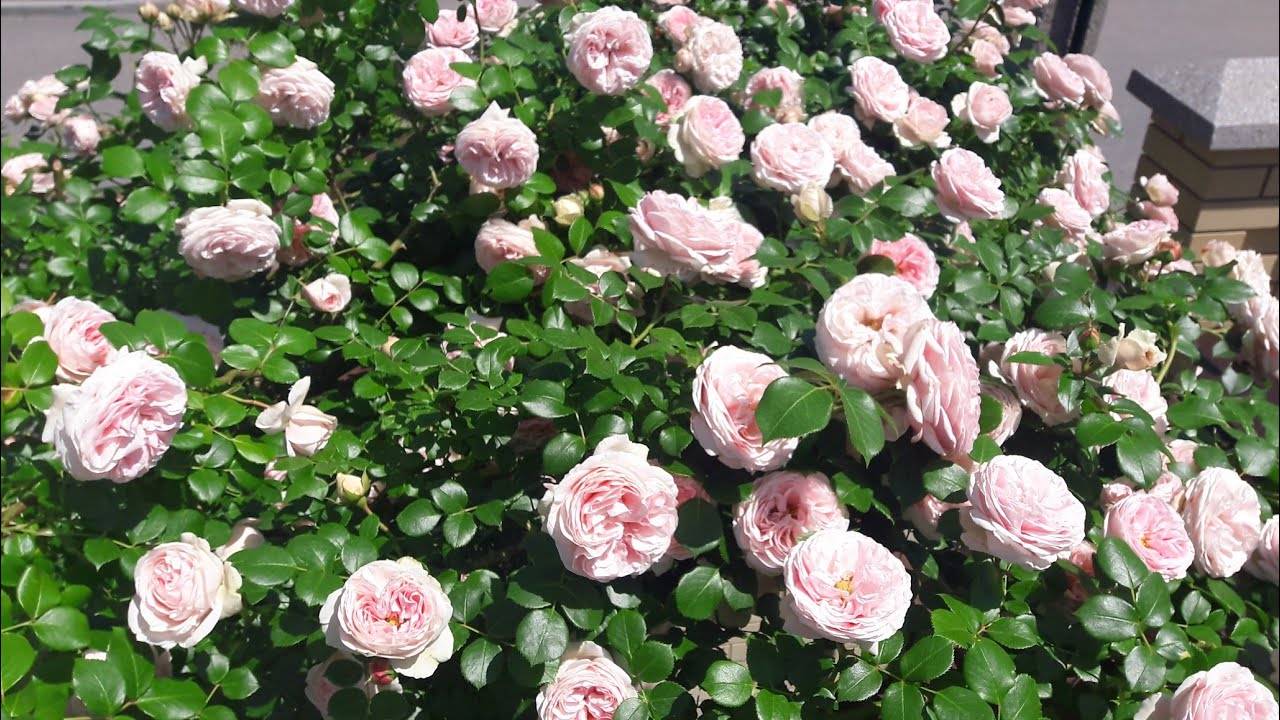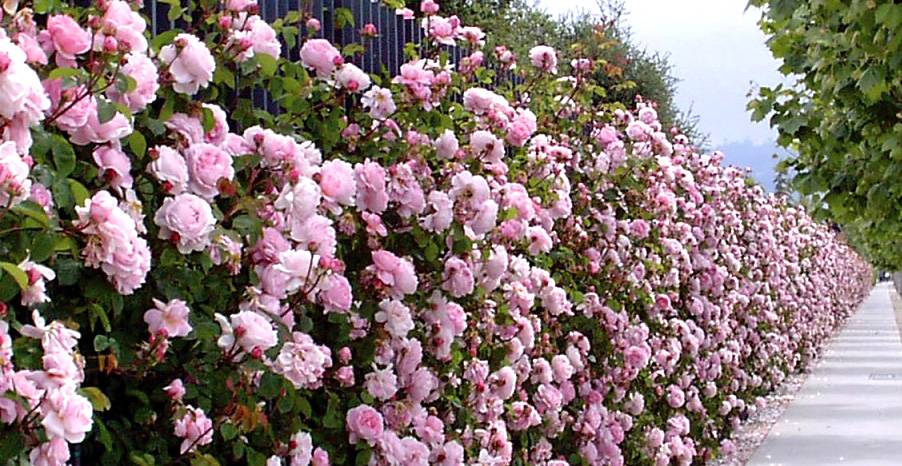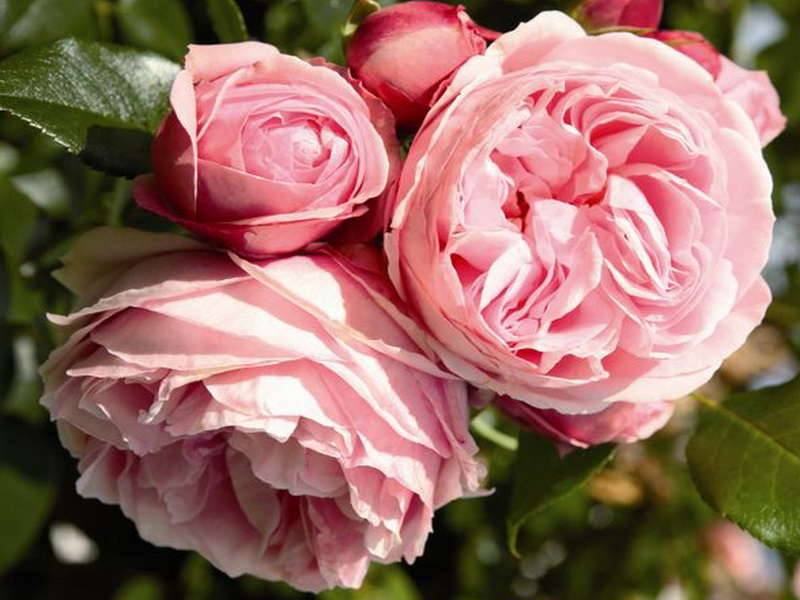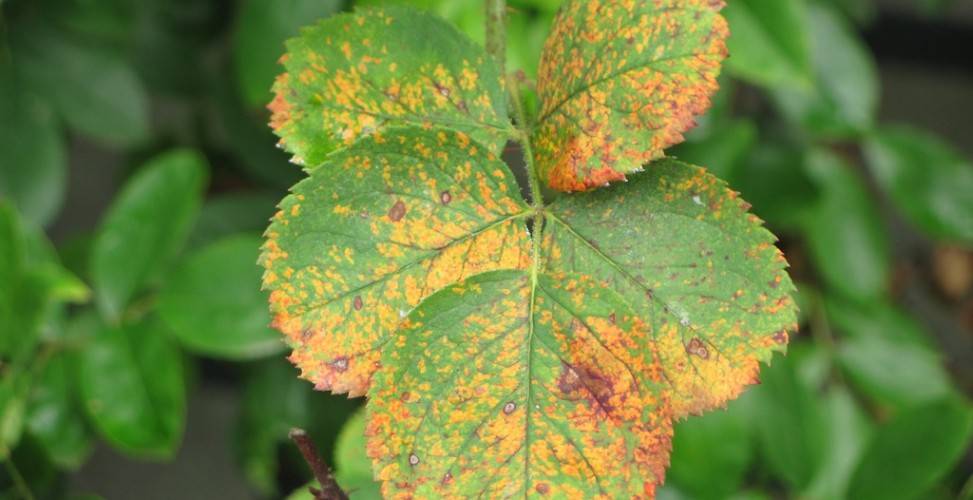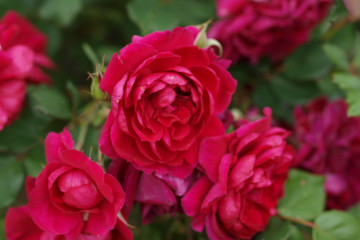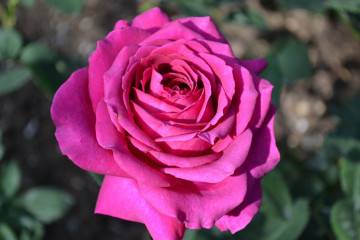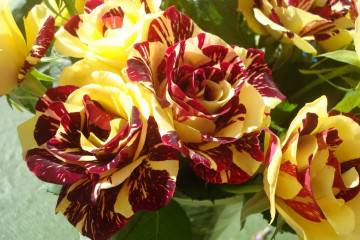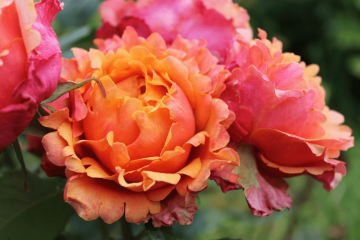Rose Jardina (Giardina)
Content:
Rose Jardina is an attractive ornamental plant that is actively used in landscape design. The culture is often used to decorate garden plots. Moreover, it can be placed singly or in groups.
Rose Jardina (Giardina) - what kind of variety, history of creation
Rose Giardina is a climbing variety. It was obtained in 2008 by a German gardener. The culture is distinguished by its excellent resistance to the sun. Its buds do not fade during the flowering period.
Brief description, characteristic
In height, the bushes can reach 4 m. In width, the plant grows up to 1.5 m. The description of the culture says that it has large inflorescences. They reach 10-12 cm in diameter and are pale pink in color. Each flower includes 75 petals.
Flowers form brushes, each of which contains 3-5 pieces. They have a light fruity smell. Rose leaves are also decorative. The absence of sharp thorns is considered an indisputable advantage of the plant.
Advantages and disadvantages of the variety
The Jardine climbing rose has many virtues:
- lush and abundant flowering;
- pleasant fruity aroma;
- lack of thorns;
- decorative leaves;
- frost resistance;
- resistance to disease.
Use in landscape design
The plant is often used to decorate garden plots. It can be planted singly or combined with other crops. Roses of this variety are great for vertical gardening. They can be used to decorate gazebos, arches, fences.
Growing a flower, how to plant it in open ground
For the cultivation of the climbing rose Giardina to be successful, it is necessary to take care of quality plant care.
The culture is recommended to be planted in the ground in the form of seedlings. They can be purchased from nurseries. When choosing a planting material, you should definitely pay attention to its quality.
In temperate areas, the crop can be planted at the end of September. After 10-15 days, the plant adapts. It is also permissible to buy a rose in the nursery in the spring and immediately plant it in the ground.
Location selection
The rose needs a sunny area that is well ventilated. You should not plant the plant in places where roses have already grown. It is best to plant the culture in an elevated location. This helps to avoid stagnant moisture.
How to prepare the soil and flower for planting
The rose belongs to the weaving varieties, so it needs high-quality support. An arch, a pillar, a fence can play its role. When planting a plant near a wall, 60 cm recede from it.
It is recommended to plant bushes in loamy soil. It should be loose and moisture permeable. To make heavy soil lighter, it needs to be mixed with sand and lime. To make the soil more fertile, phosphorus fertilizers and humus are added to it.
To prepare a seedling, it is recommended to soak it in water for a day. It is imperative to prune branches and roots. The overgrown fragments must be cut to 15 cm. Weakened shoots are recommended to be removed completely.
Planting procedure step by step
To plant the Jardine rose, it is recommended that you do the following:
- make a 60 cm depression;
- add 5 kg of peat compost or other useful composition to the hole;
- place a seedling in the hole so that the root collar is 10 cm below ground level;
- fill the recess with soil and lightly tamp it;
- water the planted plant abundantly.
Plant care
In order for the Giardina rose to fully develop and delight with abundant flowering as long as possible, it is necessary to provide it with high-quality care.
Watering rules
In hot weather, it is recommended to water the culture at intervals of 5 days. During its development, the culture needs good watering. 1 bush requires a bucket of water.
Top dressing and soil quality
The culture requires regular feeding. For this, humate or other nutrient compositions can be used. Humus or compost is an excellent option.
Pruning and replanting
Correct pruning helps improve flowering. After planting the culture, the shoots are shortened to 30 cm. In the summer, faded buds and branches directed towards the inside of the crown should be removed.
If the rose was unsuccessfully planted, you should not wait for abundant flowering. In such a situation, you need to transplant the plant. This procedure is recommended to be carried out in autumn - in September or early October.
Features of wintering a flower
In cold climates, the rose must be covered. To do this, it is recommended to remove its stems from the support, cut off dry shoots, bend them to the ground and fix them with pegs. Sprinkle the plant on top with a layer of soil. It is recommended to insulate the base of the culture with agrofiber.
Blooming rose
Flowering directly affects the decorative properties of the crop. In order for as many buds to form on the bushes as possible, certain features must be taken into account.
A period of activity and rest
Plant activity begins in spring and blooms in June and lasts until the end of summer. The specific flowering time depends on the temperature. In winter, the plant has a dormant stage.
What to do if it does not bloom, possible reasons
If the rose does not bloom, this may be due to the following reasons:
- Wrong choice of landing site. In this case, there is a risk of death of the culture. Before planting it, you should make sure there is no shade and cold wind.
- Root growth development. It is recommended to remove the shoots immediately, since they absorb nutrients from the plant.
- Development of diseases. The rose may encounter powdery mildew or bacterial bark lesions. Potassium-based fertilizers help minimize the risk of pathologies. In the fall, potassium sulfate or superphosphate is introduced.
- Violation of the rules for warming the bush. Before the onset of cold weather, the rose needs to be well covered. In this case, an air cushion must be present between the plant and the insulation.
Flower propagation
The plant can be propagated in different ways. In this case, the most popular method is cuttings. The seed method does not preserve the characteristics of the mother plant.
The easiest way to propagate the culture is cuttings. Moreover, this method almost always gives the desired results.Faded shoots are used as a starting material.
From cut cuttings, you need to remove the leaves from the bottom. Then place in a container with a substrate, deepening by 1-3 cm. The planted stalk should be covered with a jar and placed in a lighted place. The soil must be periodically moistened.
Diseases, pests and ways to control them
The bush can suffer from attacks of spider mites, aphids, thrips. Also, the plant is afraid of leaf rollers and rose sawflies. To cope with parasites, you need to use effective means - "Aktellik", "Aktaru".
Also, the culture can be subject to the development of various diseases. These include gray rot, bacterial cancer, bark burn, powdery mildew. To avoid the development of diseases, a solution of copper sulfate is used. Its concentration should be 3%.
Before planting a crop, it is necessary to process its root system. It is important to remove the affected areas and treat the culture with Bordeaux liquid or copper sulfate.
Jardine rose has excellent decorative properties. In order for the plant to develop normally and bloom profusely, it should be fully looked after. It is important to water and feed the crop in a timely manner.
